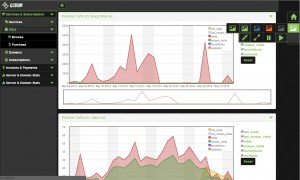While we still continue to compare new client’s sites with Pagespeed. We have also put together a tool which will show us aggregated time/count/sizes of loaded websites. Below is a read out of latest as well as Pagespeed results:
|
1 2 3 4 5 6 7 8 9 10 11 12 13 14 15 16 17 18 19 20 21 22 23 24 25 26 27 28 29 30 31 32 33 34 35 36 37 38 39 40 41 42 43 44 45 46 47 48 49 50 51 52 53 54 55 56 57 58 59 60 61 62 63 64 65 66 67 68 69 70 71 72 73 74 75 76 77 78 79 80 81 |
fetch http://bndlsvapes.com/ Array ( [sizes] => Array ( [base64Size] => 0 B [cssSize] => 526.3 KB [htmlSize] => 78.34 KB [imageSize] => 2.4 MB [jsSize] => 872.1 KB [jsonSize] => 0 B [otherSize] => 0 B [videoSize] => 0 B [webfontSize] => 413.41 KB ) [requests] => Array ( [base64Count] => 0 [cssCount] => 29 [htmlCount] => 3 [imageCount] => 19 [jsCount] => 43 [jsonCount] => 0 [otherCount] => 0 [videoCount] => 0 [webfontCount] => 11 ) [size] => 4.24 MB [requests_total] => 105 [complete_load] => 3.34 s [dom_ready] => 932 ms [complete_traffic] => 4.08 s [total_requests] => 105 ) --------------------------------------------------- --------------------------------------------------- fetch http://bndlsvapes.com/ (after move) Array ( [sizes] => Array ( [base64Size] => 0 B [cssSize] => 511.86 KB [htmlSize] => 84.57 KB [imageSize] => 1.82 MB [jsSize] => 673.02 KB [jsonSize] => 0 B [otherSize] => 52.12 KB [videoSize] => 0 B [webfontSize] => 399.31 KB ) [requests] => Array ( [base64Count] => 0 [cssCount] => 29 [htmlCount] => 3 [imageCount] => 19 [jsCount] => 43 [jsonCount] => 0 [otherCount] => 1 [videoCount] => 0 [webfontCount] => 10 ) [size] => 3.5 MB [requests_total] => 105 [complete_load] => 1.38 s [dom_ready] => 901 ms [complete_traffic] => 3.73 s [total_requests] => 105 ) |
| Site | Response Time | Load Time | Download (First Load) | Page Speed Score | Cost |
|---|---|---|---|---|---|
| Original | 340ms | 3.34s | 4.24MB | 64 / 50 | ? |
| Compare | 300ms | 1.38s | 3.5MB | 88 / 70 | 150$~ |


